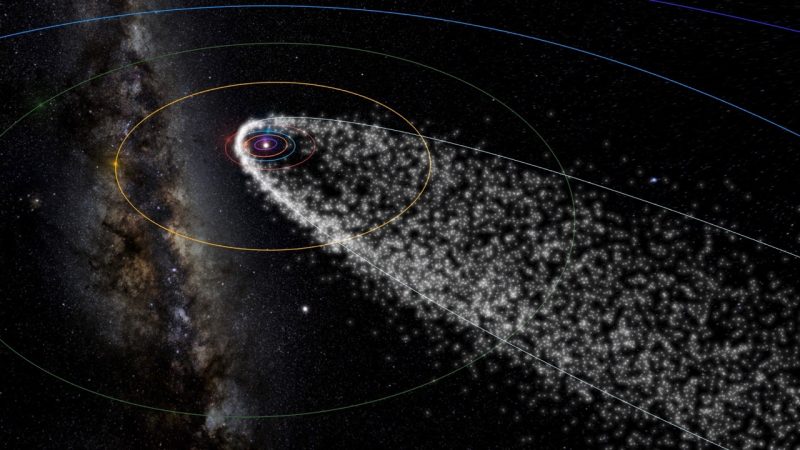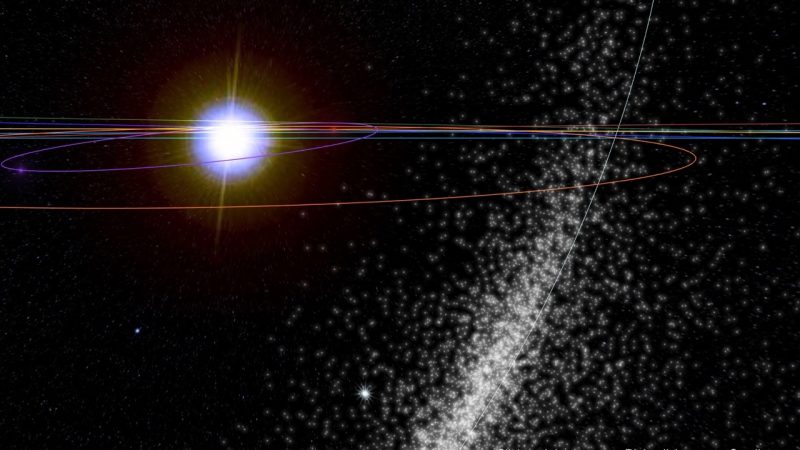
This visualization uses NASA data to render known Perseid meteoroids as they move through the space of our solar system. What’s a meteoroid? It’s just a bit of debris in space before it has entered Earth’s atmosphere and vaporized, thereby becoming a meteor or fiery streak in our night sky. Meteors originate in the bodies of comets. The Perseids, in particular, come from Comet Swift-Tuttle, which last visited the inner solar system in 1992. Ian Webster developed this visualization of the Perseid meteor stream in space in 2020, using meteor data provided by astronomer Peter Jenniskens. Webster got help from the SETI Institute, too. The goal was to make it easier to understand the natural phenomenon of meteor showers.
What’s so cool about the interactive page of this visualization? It’s always great to have an aid for picturing a three-dimensional aspect of outer space. This visualization is especially effective because it lets you click into the view from various perspectives. For example, the view below is the Perseid meteor stream as seen from Earth; be sure to visit the page to see the meteors coming toward you!

Bottom line: Two screen shots from Ian Webster and Peter Jenniskens’ wonderful visualization showing Perseid meteoroids in space.
The post Visualize the Perseid meteor stream in space first appeared on EarthSky.
from EarthSky https://ift.tt/3BG3e2B

This visualization uses NASA data to render known Perseid meteoroids as they move through the space of our solar system. What’s a meteoroid? It’s just a bit of debris in space before it has entered Earth’s atmosphere and vaporized, thereby becoming a meteor or fiery streak in our night sky. Meteors originate in the bodies of comets. The Perseids, in particular, come from Comet Swift-Tuttle, which last visited the inner solar system in 1992. Ian Webster developed this visualization of the Perseid meteor stream in space in 2020, using meteor data provided by astronomer Peter Jenniskens. Webster got help from the SETI Institute, too. The goal was to make it easier to understand the natural phenomenon of meteor showers.
What’s so cool about the interactive page of this visualization? It’s always great to have an aid for picturing a three-dimensional aspect of outer space. This visualization is especially effective because it lets you click into the view from various perspectives. For example, the view below is the Perseid meteor stream as seen from Earth; be sure to visit the page to see the meteors coming toward you!

Bottom line: Two screen shots from Ian Webster and Peter Jenniskens’ wonderful visualization showing Perseid meteoroids in space.
The post Visualize the Perseid meteor stream in space first appeared on EarthSky.
from EarthSky https://ift.tt/3BG3e2B

Aucun commentaire:
Enregistrer un commentaire